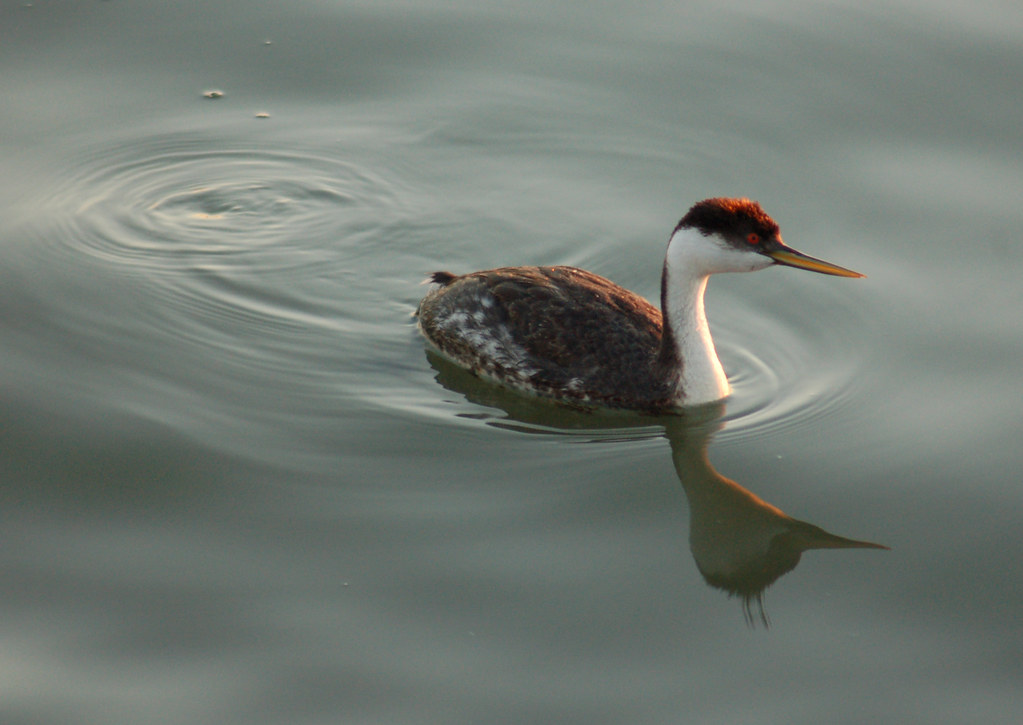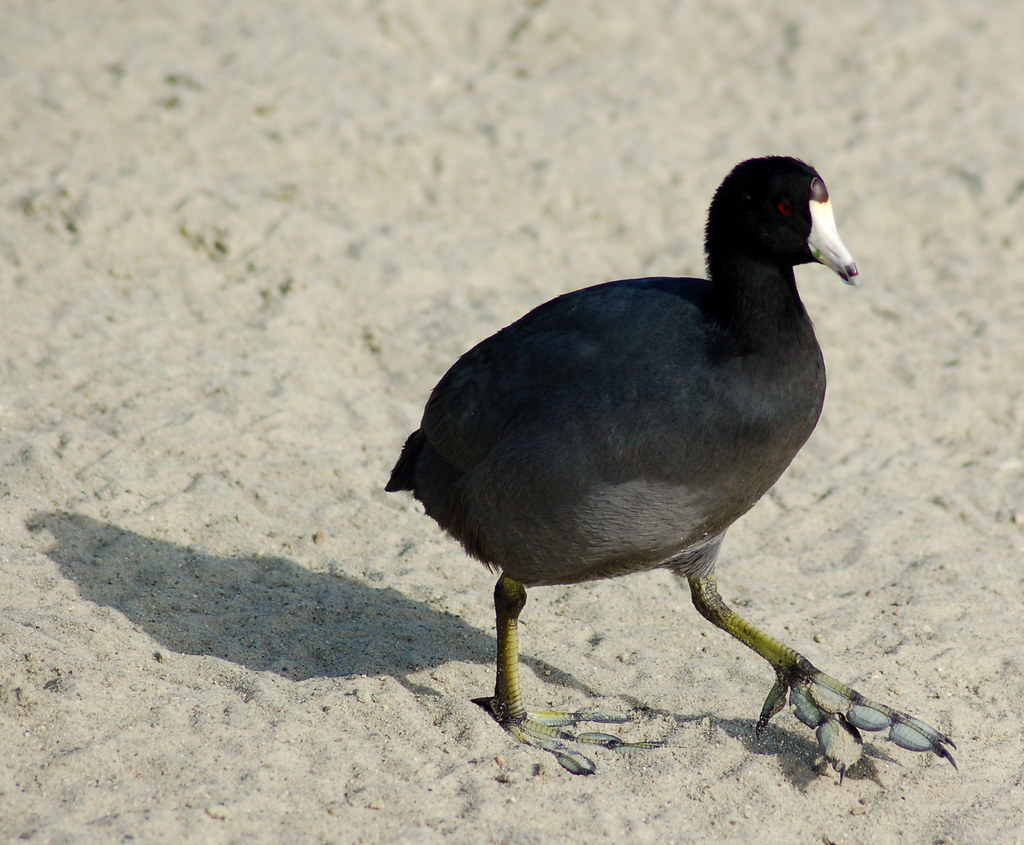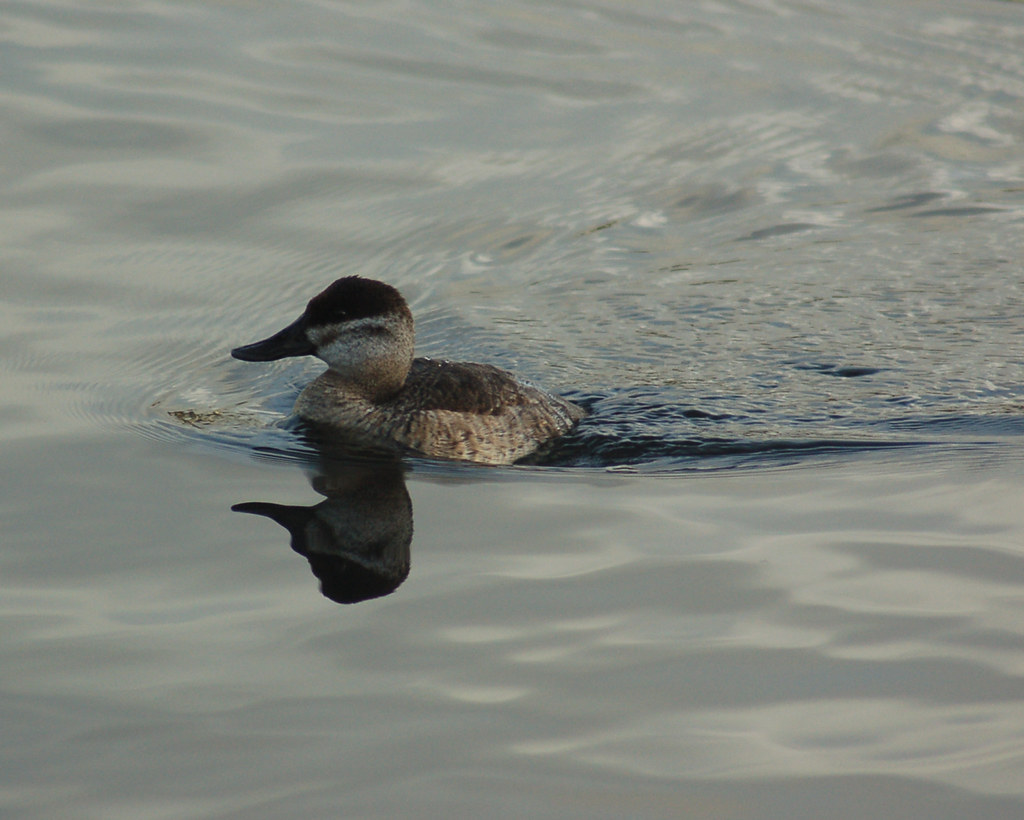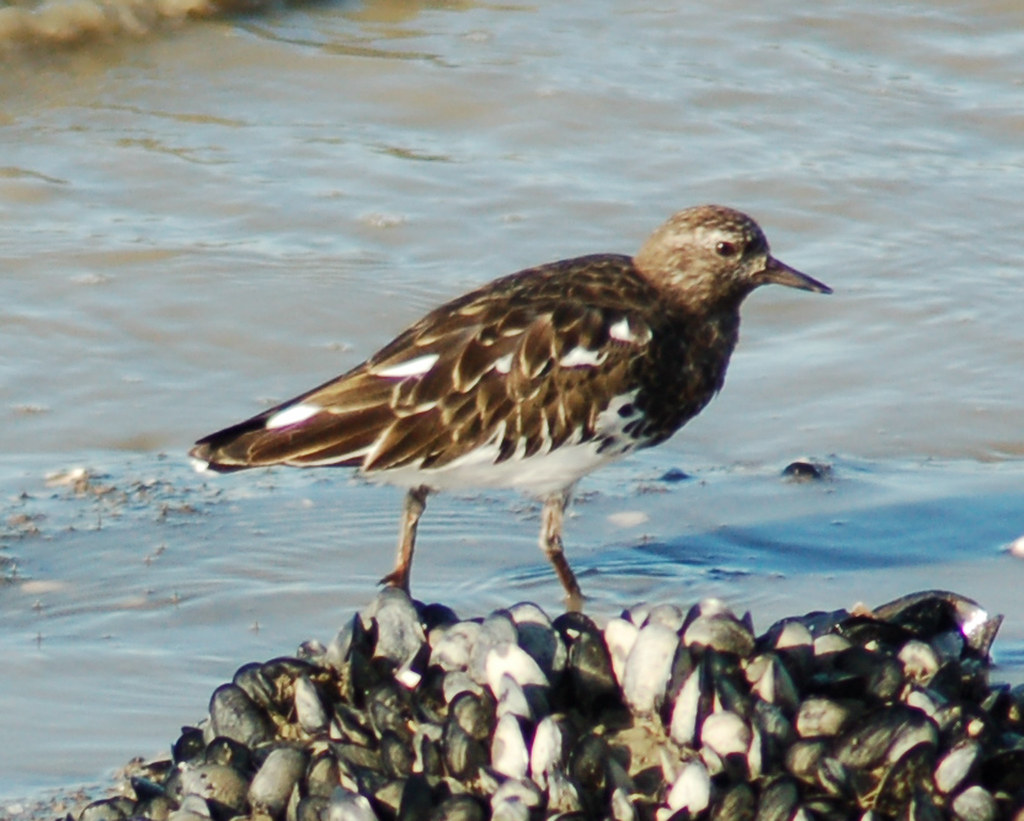What's the Flock?
Yesterday, I was far too busy to take pictures. However, since we are working with local birds, I have photos of many of them already. Perhaps it might be nice to look at some of our "hospital patients" in their natural habitats.
What I mainly did yesterday was act as an assistant for a team of trained animal rehabilitators. Due to the complexity of this project (at this point, over a thousand live oiled birds have been brought in for care), I worked on a huge variety of tasks. I was at the center for eleven hours yesterday, which hardly compares to the hours that the more skilled workers have been putting in. Most of them have worked fifteen-to-eighteen hours a day since the oil spill.
Since there are more pools and aviaries coming on line every day, we are busy with preparing these for the birds, and in some cases, moving the birds to more suitable pools. The birds have been through so many terribly stressful experiences, that we are trying to reduce their stress. One thing we do, is hang sheets on the netting over their pools, so that they aren't agitated every single time a scary human walks past. (No matter how caring we try to be, we are all scary humans to these birds.)

The bulk of the birds in the pools are Surf Scoters, and I believe there are some White-Winged and Black Scoters as well. Since the birds are transitioning into breeding plumage, it is somewhat difficult for me to identify their species. Besides, I'm not there to bird-watch. I'm busy with my work. (But I will say that I'm charmed by seeing the transition up-close, many of the Scoters are just beginning to develop the white patch on the back of their heads, and it looks like they are getting salt-and-pepper grey hair.)

The next biggest population are the Grebes. We have the large, feisty Western and Clark's Grebes, which I think of as a pair of needle-nosed pliers on the end of an angry garden hose. They are a handful. I was an assistant during the night-time hydration effort for all the birds that had to stay in heated pens. Those birds dry out from the heat, and also because they cannot drink (birds drink the water they're swimming in). These birds are administered Pedialyte, via tube-feeding. Any birds that have prominent "keel" bones are put into cloth "donuts" overnight, to prevent more wear on their breastbone area, which may develop into dangerous "keel lesions."

The smaller Eared and Horned Grebes are quite plentiful. I chopped up fish, transported, and helped helped hydrate these little dudes.

We have a number of American Coots. These birds are quite aggressive, considering their relatively small size. We carefully wrap any bird we handle in a towel, which minimizes stress on the birds, and keeps them from struggling. Somehow, I still managed to get bitten by a Coot. I don't intend to be bitten again, but I rather admire the birds for their spirit, considering all they've been through.

Lake Merritt, where we live, is the overwintering home of thousands of Scaups, and unfortunately some of the Bay's migrating Scaups were affected by the spill.

Next in number are probably the Common Murres. These birds don't come near land very often, and I don't have a photo of these handsome penguin-ish creatures in the wild, so here's an illustration. Do you see how that bird is resting on his legs, or "hocks?" As part of the evening chores for the birds staying out of water, I applied "hock wraps" to protect their skin from abrasion.

Ruddy Ducks remind me of rubber duckies, because of their petite proportions and general adorable-ness.
After this, the numbers diminish, and the next batch of birds listed are odd-balls at the rehab center.

There was a juvenile Rhinoceros Auklet in care, but he had not matured enough to have developed his super-sexy beak structure.

There are very few gulls in care. One of the birds I encountered was a Bonaparte's Gull. He's relatively small, compared the the massive Western Gulls.

I was in awe of the woman I assisted, who caught and transported the Swan and Canada Goose. These animals are huge!

Most of what we do for these birds is uniquely un-charming work. But is is gratifying in its own way.
I did have one truly delightful bird experience yesterday. We were moving some birds from one pool aviary into another. The first aviary held, among other species, a single Black Turnstone. This shore-dwelling little bird kept us on our toes, because it could, and did, fly all over the place. We had many birds to move, and were being very careful never to open the door when the Turnstone was near the door, or in flight. At one point, I was waiting for my co-worker to catch the next bird and hand it to me, when the Turnstone, which is not typically a perching bird alighted on my head.
"Hey Sandra," I said "You've got to look up. I have a new hat!" The sun was shining from behind my back, and I could see the shadow of this little bird, perched on my head, looking around, looking around. I waved my hands to try to move the bird along, but it stayed put. I bent at the waist, and the bird just hopped on down my back. Eventually, it flew off on its own.
Too bad nobody had a camera at that moment!
Later:
I totally forgot to write about the Loons that are in care, but that makes some sense. Loons, I have learned, are particularly susceptible to stress, and are given even more privacy than the other birds. I tend to forget about them, until dust when they have a period of vocalization. Their hair-raisingly beautiful cries sound like the ghosts are singing.
What I mainly did yesterday was act as an assistant for a team of trained animal rehabilitators. Due to the complexity of this project (at this point, over a thousand live oiled birds have been brought in for care), I worked on a huge variety of tasks. I was at the center for eleven hours yesterday, which hardly compares to the hours that the more skilled workers have been putting in. Most of them have worked fifteen-to-eighteen hours a day since the oil spill.
Since there are more pools and aviaries coming on line every day, we are busy with preparing these for the birds, and in some cases, moving the birds to more suitable pools. The birds have been through so many terribly stressful experiences, that we are trying to reduce their stress. One thing we do, is hang sheets on the netting over their pools, so that they aren't agitated every single time a scary human walks past. (No matter how caring we try to be, we are all scary humans to these birds.)

The bulk of the birds in the pools are Surf Scoters, and I believe there are some White-Winged and Black Scoters as well. Since the birds are transitioning into breeding plumage, it is somewhat difficult for me to identify their species. Besides, I'm not there to bird-watch. I'm busy with my work. (But I will say that I'm charmed by seeing the transition up-close, many of the Scoters are just beginning to develop the white patch on the back of their heads, and it looks like they are getting salt-and-pepper grey hair.)

The next biggest population are the Grebes. We have the large, feisty Western and Clark's Grebes, which I think of as a pair of needle-nosed pliers on the end of an angry garden hose. They are a handful. I was an assistant during the night-time hydration effort for all the birds that had to stay in heated pens. Those birds dry out from the heat, and also because they cannot drink (birds drink the water they're swimming in). These birds are administered Pedialyte, via tube-feeding. Any birds that have prominent "keel" bones are put into cloth "donuts" overnight, to prevent more wear on their breastbone area, which may develop into dangerous "keel lesions."

The smaller Eared and Horned Grebes are quite plentiful. I chopped up fish, transported, and helped helped hydrate these little dudes.

We have a number of American Coots. These birds are quite aggressive, considering their relatively small size. We carefully wrap any bird we handle in a towel, which minimizes stress on the birds, and keeps them from struggling. Somehow, I still managed to get bitten by a Coot. I don't intend to be bitten again, but I rather admire the birds for their spirit, considering all they've been through.

Lake Merritt, where we live, is the overwintering home of thousands of Scaups, and unfortunately some of the Bay's migrating Scaups were affected by the spill.

Next in number are probably the Common Murres. These birds don't come near land very often, and I don't have a photo of these handsome penguin-ish creatures in the wild, so here's an illustration. Do you see how that bird is resting on his legs, or "hocks?" As part of the evening chores for the birds staying out of water, I applied "hock wraps" to protect their skin from abrasion.

Ruddy Ducks remind me of rubber duckies, because of their petite proportions and general adorable-ness.
After this, the numbers diminish, and the next batch of birds listed are odd-balls at the rehab center.

There was a juvenile Rhinoceros Auklet in care, but he had not matured enough to have developed his super-sexy beak structure.

There are very few gulls in care. One of the birds I encountered was a Bonaparte's Gull. He's relatively small, compared the the massive Western Gulls.

I was in awe of the woman I assisted, who caught and transported the Swan and Canada Goose. These animals are huge!

Most of what we do for these birds is uniquely un-charming work. But is is gratifying in its own way.
I did have one truly delightful bird experience yesterday. We were moving some birds from one pool aviary into another. The first aviary held, among other species, a single Black Turnstone. This shore-dwelling little bird kept us on our toes, because it could, and did, fly all over the place. We had many birds to move, and were being very careful never to open the door when the Turnstone was near the door, or in flight. At one point, I was waiting for my co-worker to catch the next bird and hand it to me, when the Turnstone, which is not typically a perching bird alighted on my head.
"Hey Sandra," I said "You've got to look up. I have a new hat!" The sun was shining from behind my back, and I could see the shadow of this little bird, perched on my head, looking around, looking around. I waved my hands to try to move the bird along, but it stayed put. I bent at the waist, and the bird just hopped on down my back. Eventually, it flew off on its own.
Too bad nobody had a camera at that moment!
Later:
I totally forgot to write about the Loons that are in care, but that makes some sense. Loons, I have learned, are particularly susceptible to stress, and are given even more privacy than the other birds. I tend to forget about them, until dust when they have a period of vocalization. Their hair-raisingly beautiful cries sound like the ghosts are singing.

Comments
your hair is just a magnet for all creatures! good work, again
Sheila
Annalisa
They're lucky to have you and so many other concerned people to try and ease them back into health.
also, do you think Murres are an evolutionary intermediary between a duck and a penguin?
I agree, the Ruddy Ducky looks like he would make bath time lots of fun.
excellent description of the Grebe, by the way.
Your photos are great!
Martha
I really do like them, I have to admit.
But then I like coots' feet too. Not only funny and lobed, but chartreuse!